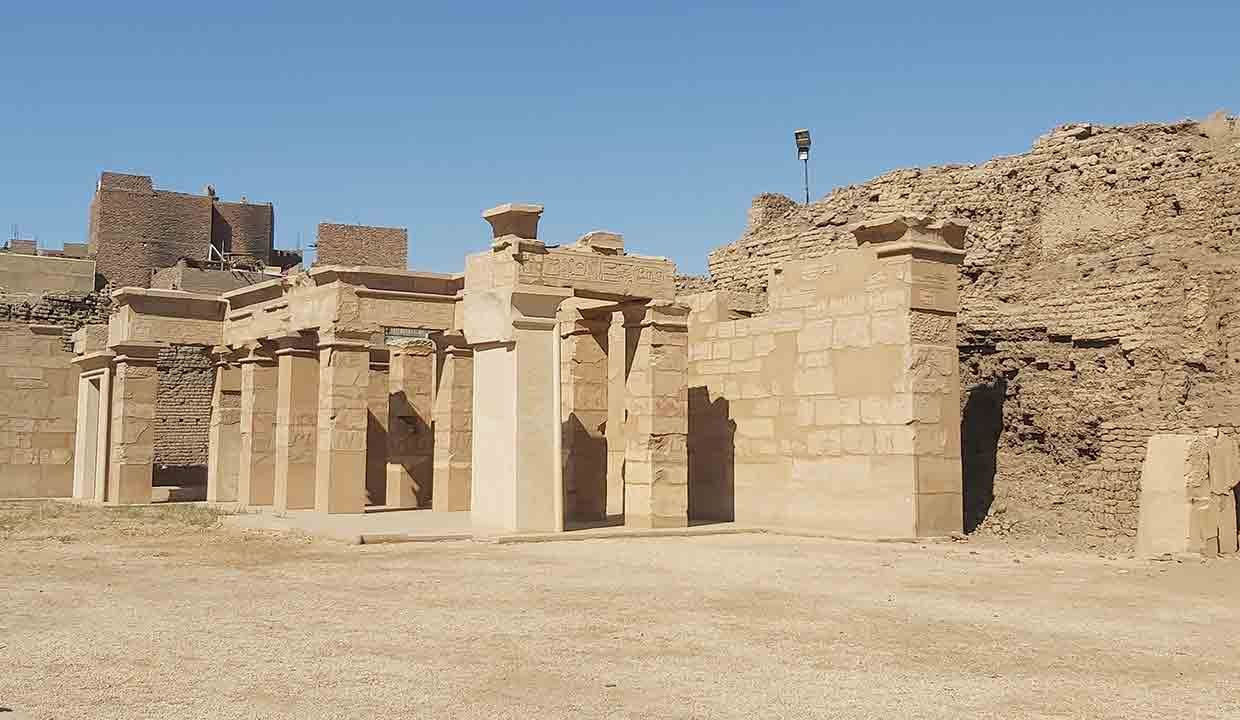Karnak Temple, located by the banks of the Nile in Egypt, is a colossal tribute to the magnificence of ancient Egyptian civilization. Situated more than 500 kilometers south of Cairo, this sprawling temple complex tells the captivating tale of nearly thirty pharaohs who, over the years, have left an indelible mark on its landscape. The richness of Karnak’s history is seen in its sheer size, intricate complexity, and unparalleled diversity, making it a unique marvel in the ancient world.
The Magnificent Karnak Temple Complex
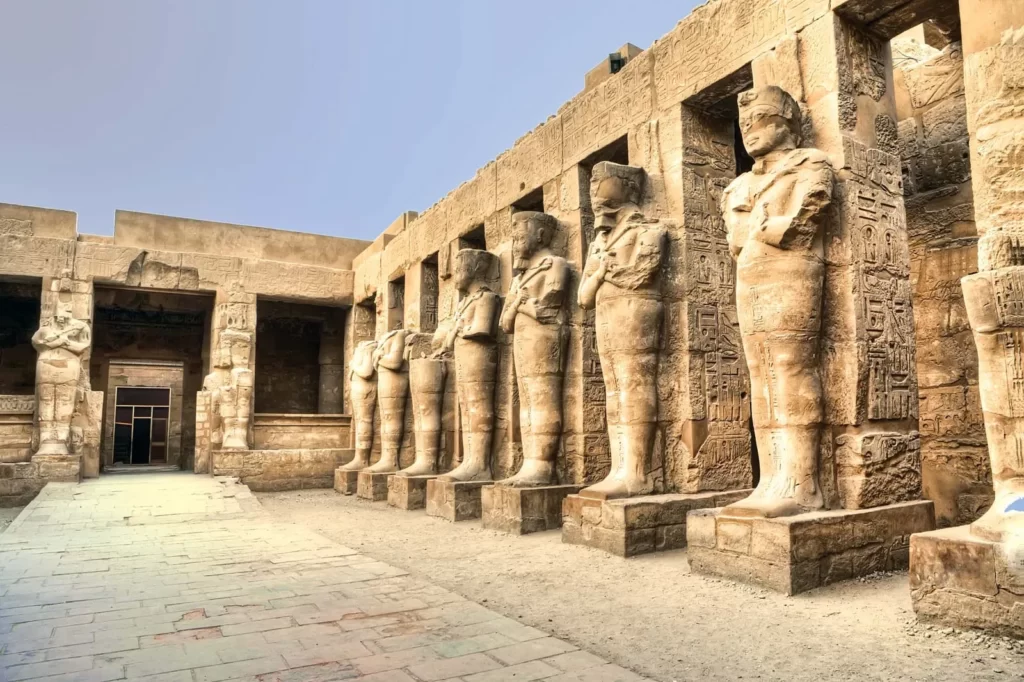
The Karnak Temple Complex is really big and important in history. It’s known as the largest ancient religious site ever. Karnak has a lot of old temples, chapels, pylons, and other buildings that are kind of broken now. But these old structures hold a lot of stories from ancient times when people lived in Egypt.
One of the coolest parts of Karnak is the Great Temple of Amun. It’s like a special place for religious stuff, and it shows how much the ancient Egyptians believed in their gods. Another important thing in Karnak is a huge creation started by a smart Pharaoh named Ramses II. He was in charge around 1391–1351 BC, a really long time ago. Ramses II wanted to make something amazing, and he did! His creation is a big deal in Karnak, and it tells us a lot about how smart and ambitious he was.
When you walk around Karnak today, you can see the broken bits of these old structures and imagine how they looked when they were new. The Great Temple of Amun, Temple of Hatshepsut, and Ramses II’s creation is like the superstars of Karnak, showing us the grand ideas and beliefs of the ancient Egyptians. It’s like taking a trip back in time and discovering the cool things that happened so many years ago.
A Glimpse into History: Ipet-it and Thebes
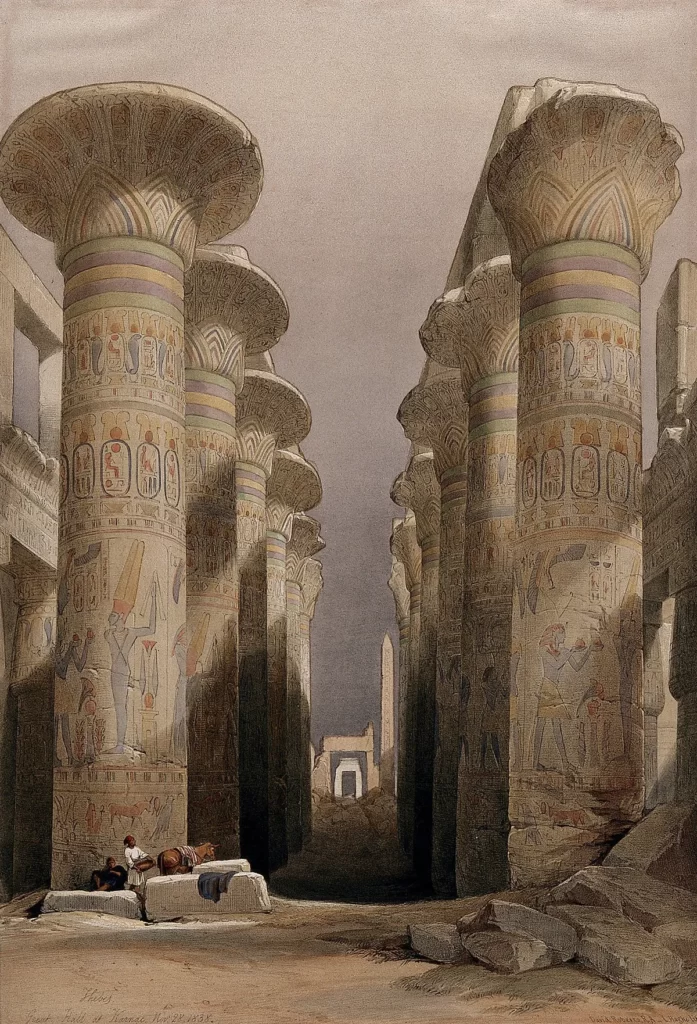
In the olden days, Karnak was like the heart of worship in the eighteenth dynasty of ancient Egypt. It sat right in the middle of the super important place called Ipet-it, which means ‘The Most Selected of Places.’ Picture it as a key part of the huge city of Thebes. The clever planning and hard work put into building Karnak made it a special place. It’s not just about the big and fancy buildings.
it’s also about the care and effort that went into creating this incredible spot. The people of ancient Egypt had a strong connection to Karnak, and it was a vital hub for their religious practices. As you explore Karnak today, you’re stepping into the shoes of those who lived in a time when this place was the center of their world, full of meaning and significance.
Precinct of Amun-Re: A Colossal Sanctuary
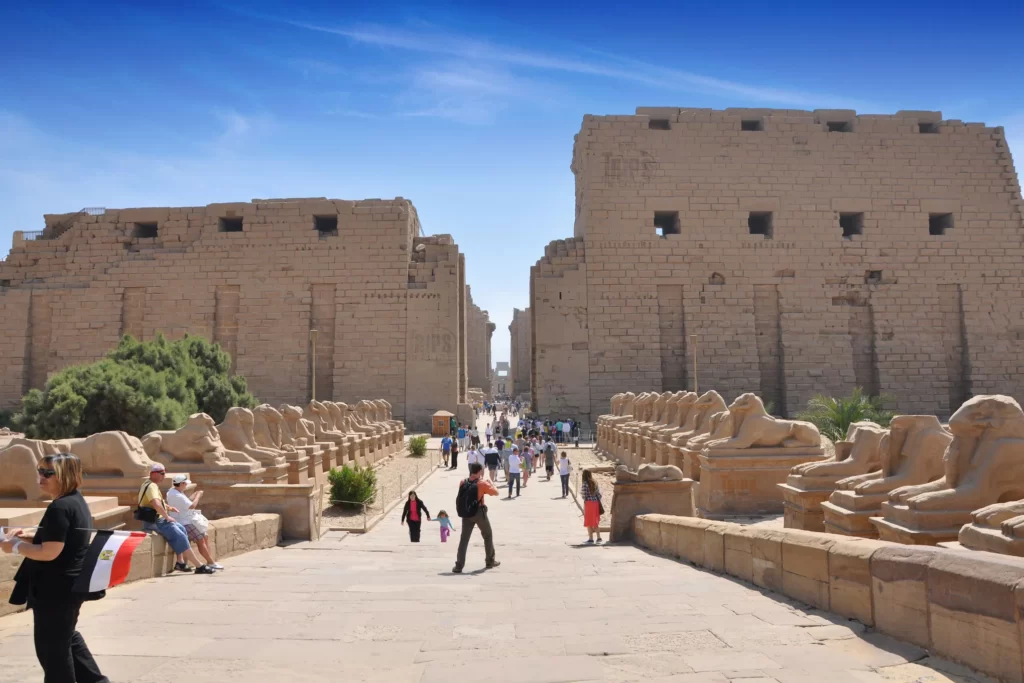
In the middle of Karnak, there’s a special place called the Precinct of Amun-Re. This area is dedicated to Amun-Re, the main god they worshipped. It’s like a huge sanctuary with gigantic statues, like the super tall one of Pinedjem I that’s 10.5 meters high. The stones and columns for the temple were brought from Gebel Silsila, a hundred miles south along the Nile River. One really big thing to notice is the massive obelisk, weighing a whopping 328 tonnes and standing tall at 29 meters.
This special part of Karnak, the Precinct of Amun-Re, shows us how important Amun-Re was to the people. The statues and the giant obelisk are not just big structures; they’re like symbols that tell us about the gods and what people believed in a long, long time ago. The fact that they moved such heavy stones from far away to build this place shows how dedicated and skilled the ancient Egyptians were.
The Great Hypostyle Hall: Architectural Marvel
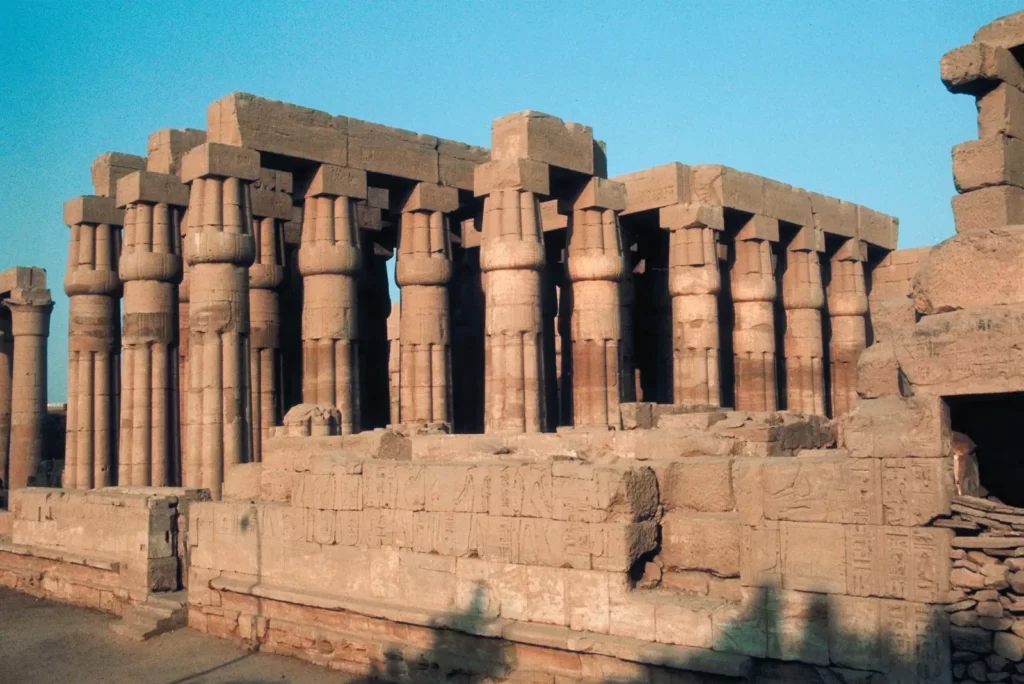
The Great Hypostyle Hall at Karnak is one of the coolest places you can visit in ancient Egypt. Lots of people come to see it because it’s like a wonder of building stuff. The hall is really big, covering a space as huge as 50,000 square feet. Imagine a big room in your house, and this one is even more massive! In the past, the roof of the hall was held up by 134 columns lined up in 16 rows.
What’s interesting is that the two middle rows were taller than the others, standing at 33 feet around and 80 feet high. This hall was a bright idea from Seti I, and Ramesses II helped finish it. It’s like a giant show of how smart and creative ancient Egyptians were in making cool things.
Annual Spectacle: The Opet Festival
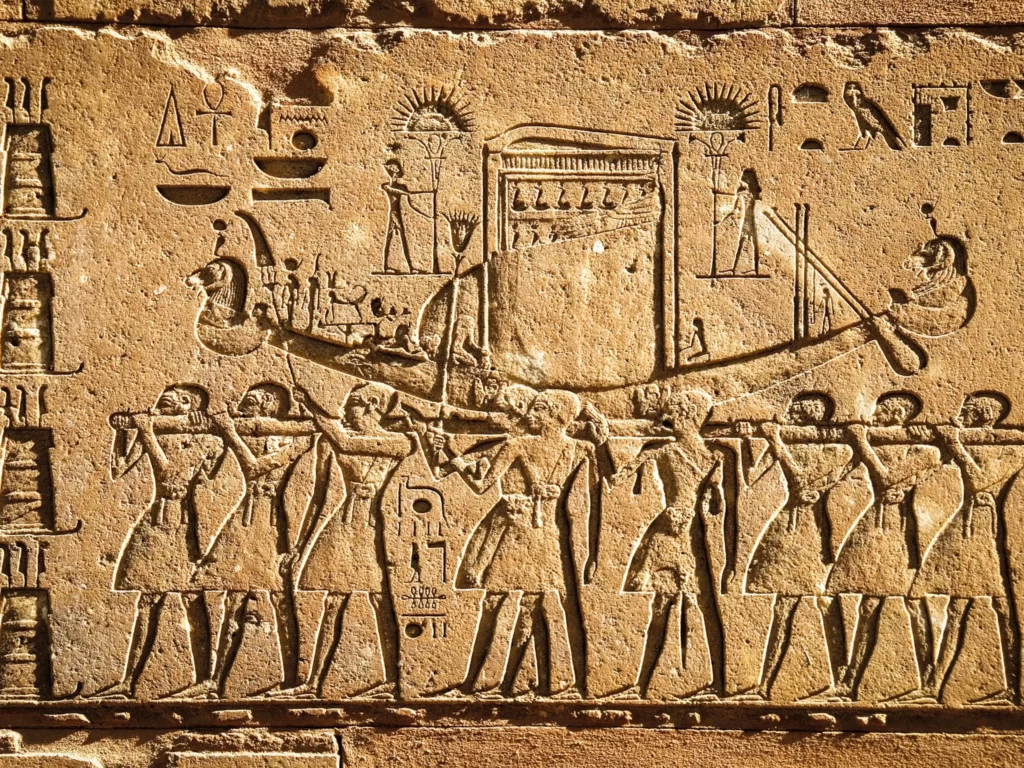
The Opet Festival, a yearly celebration that lasted for twenty-seven days, turned Karnak into a lively center of cultural and religious events for almost 2,000 years. During this festival, people from Karnak would have a big parade to Luxor Temple, showcasing the strong connection between the pharaoh and the god Amun. This festival wasn’t just a regular event; it was like a magical ritual that aimed to renew the energy of the land, ensuring that the earth remained fertile, and the crops grew in abundance. It was a time for joy and gratitude for the bountiful harvests that were expected.
Preservation Challenges and Ongoing Discoveries
Keeping Karnak in good shape is a bit tough because the foundations aren’t very strong, and the Nile River’s yearly floods cause problems. But, despite these challenges, there are dedicated people continuously working to repair and strengthen the old structures. Their efforts not only helped preserve Karnak but also led to discoveries. Every fix and improvement reveals a bit more about the history of this ancient marvel, making it an ongoing journey of uncovering the past. It’s like finding hidden treasures that add to our understanding of Karnak’s rich history.
Frequently Asked Question
How do annual floods affect Karnak Temple?
The floods of the Nile River happen every year, and they can be tough on Karnak Temple. These floods cause problems like erosion and damage to the base of the temple. But, people are working hard all the time to fix and make things stronger. They’re like the caretakers of Karnak, making sure it stays in good shape for everyone to see and enjoy.
Can visitors explore Karnak Temple today?
Visitors are welcome at Karnak Temple, and it’s like stepping into a time machine. You can see the incredible work of ancient Egyptians with towering columns, impressive statues, and pieces of history all around. It’s a chance to experience the grandness of a civilization that lived thousands of years ago, right in front of your eyes. Don’t forget your camera – there’s a lot of amazing stuff to capture!
What ongoing discoveries have been made at Karnak?
People who take care of Karnak are always fixing and making it stronger. While doing this, they keep finding new things like old objects and secrets from ancient Egyptian life. Archaeologists and historians are like detectives, revealing hidden treasures that help us know more about Karnak’s amazing past. So, every time they work on it, they’re discovering something special that adds to the story of this ancient temple.
Is Karnak Temple part of any UNESCO World Heritage site?
Yes, Karnak Temple, along with Luxor, the Valley of the Kings, and the Valley of the Queens, was honored by UNESCO in 1979. This means these places are officially recognized as world heritage sites, acknowledging their extraordinary cultural and historical significance. UNESCO wants to make sure they’re preserved and celebrated for people all around the world to enjoy.
Are there guided tours available at Karnak Temple?
When you visit Karnak Temple, you can take guided tours that give you a deep dive into its history, architecture, and significance. These tours are like fascinating journeys led by experts, providing a thorough exploration of this ancient marvel. It’s a great way to make your visit more engaging and educational!
Final words
To sum it up, Karnak Temple is like a giant treasure chest of old buildings and stories that tell us about ancient Egypt. It’s a special symbol of how these ancient people lived. Now, it’s like an open invitation for people today to come and discover the secrets of a time that’s long gone. When the sun sets by the Nile, Karnak is a reminder of how powerful and lasting this ancient civilization was, right there on the riverbanks.

